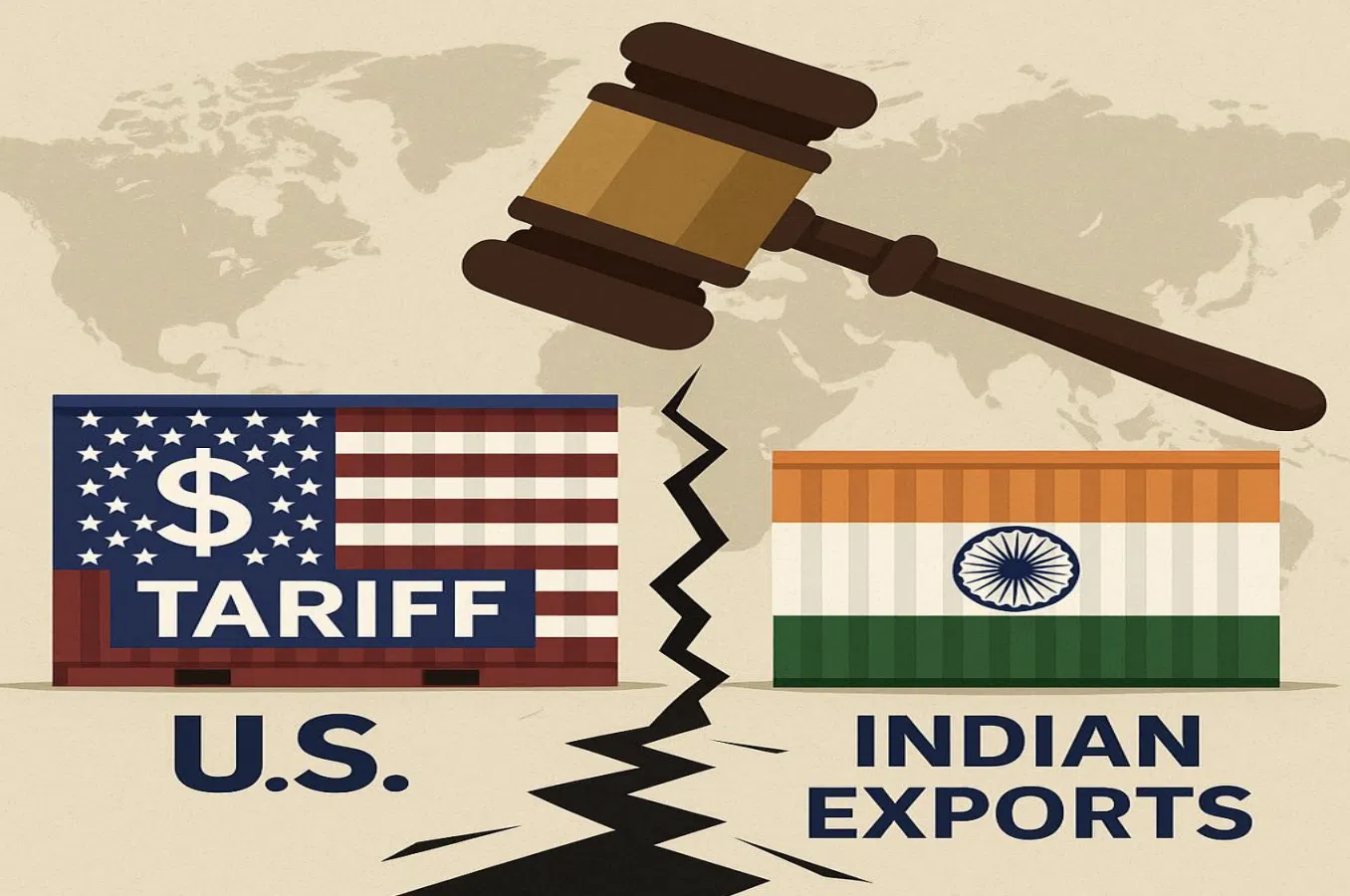Agurchand Manmull Jain College
(A Unit of Sri. S. S. Jain Educational Society)(Affiliated to the University of Madras)
Meenambakkam, Chennai – 600 061.
Agurchand Manmull Jain College
(A Unit of Sri. S. S. Jain Educational Society)
(Affiliated to the University of Madras)
Meenambakkam, Chennai – 600 061.
Impact of US Tariff on Indian Exports: A Trade Tussle with Ripple Effects
Mr.A.Venkatesh Assistant Professor, Assistant Professor – Department of Commerce (ISM & CA)
In today’s globally connected economy, any shift in trade policy by a major power like the United States sends shockwaves across the world. One such policy tool—tariffs— has been at the heart of trade disputes, especially in recent years. For India, a country that significantly relies on exports to fuel its economy, U.S. tariffs can either unlock or obstruct trade potential.
What Are Tariffs and Why Do They Matter?
Tariffs are taxes imposed on imported goods, designed either to protect domestic industries or to retaliate against perceived unfair trade practices. While they can help local producers, they often raise the cost of goods for consumers and disrupt global supply chains. For export-driven economies like India, higher tariffs in major markets like the U.S. can be detrimental.

Snapshot of India–U.S. Trade Relations
The United States is India’s largest export destination, with exports ranging from textiles and garments to pharmaceuticals, engineering goods, software services, and more. In 2023-24, bilateral trade between India and the U.S. crossed $118 billion, with Indian exports contributing more than half.
However, the relationship has seen ups and downs, particularly with the imposition of tariffs under various U.S. trade policies such as:
- Section 232 (National Security Tariffs on steel and aluminum)
- Section 301 (Tariffs targeting countries with unfair trade practices)
Sectors Hit Hard by Tariffs
When the U.S. imposed tariffs on steel and aluminum in 2018 under the Trump administration, Indian exporters were immediately affected. Here’s how:
- Engineering goods like industrial machinery and automotive components faced reduced competitiveness.
- Agricultural exports, including processed foods and spices, also came under pressure when India lost the Generalized System of Preferences (GSP) benefits in 2019, affecting nearly $5.6 billion worth of duty-free exports.
Pharmaceutical and IT Sectors: The Silver Linings
Despite these challenges, some sectors have managed to weather the storm:
- Pharmaceuticals, owing to their critical role in the U.S. healthcare sector, continue to see steady demand.
- Software and IT services, being largely tariff-insensitive digital exports, remained unaffected and even grew
Policy Responses from India
India has not remained passive in response to U.S. tariffs. Key strategies have included:
- Retaliatory Tariffs: India imposed higher tariffs on certain U.S. goods like almonds, walnuts, and apples.
- Diversification: Exporters have been encouraged to explore alternative markets in Europe, Southeast Asia, and Africa.
- FTA Negotiations: India is actively negotiating Free Trade Agreements with other countries to hedge against overdependence on the U.S. market.
Recent Developments and a Glimmer of Hope
In 2023, there were signs of reconciliation. India and the U.S. resolved several WTO disputes, and the U.S. restored some of India’s GSP privileges in select sectors. Highlevel diplomatic engagements have also focused on building a resilient trade relationship, with technology, green energy, and defense emerging as new areas of cooperation.
Conclusion: Navigating a Complex Future
The impact of U.S. tariffs on Indian exports highlights the fragile interdependence of the global economy. While some sectors struggle under tariff pressure, others adapt and thrive. For Indian exporters, the key lies in resilience, innovation, and diversification. For policymakers, it’s about building strategic trade partnerships and ensuring India remains competitive on the global stage. As trade policies evolve, the India-U.S. relationship will continue to face tests—but also offer opportunities for stronger, mutually beneficial ties.





